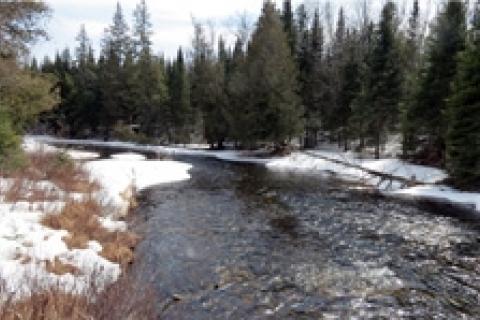
 Contrary to popular belief, when a fly fisherman talks about a fish lie, he isn't about to break into a fish story. Instead, he's referring to places where fish position themselves in the water.
Contrary to popular belief, when a fly fisherman talks about a fish lie, he isn't about to break into a fish story. Instead, he's referring to places where fish position themselves in the water.
Fish lies, also known as holding stations, are locations that attract fish because of food, current, cover, depth, temperature or a combination thereof. Being able to identify a fish lie is half the battle when fishing. And, to do that, you need to think like a fish.
The first thing to consider is that a fish needs protection — not just from other fish but also from avian predators such as ospreys and herons as well as terrestrial predators like mink, otter and us. That's why deeper pools, downed logs, stumps, aquatic vegetation, rocks and undercuts in the banks make good fish lies. In one urban creek, I actually witnessed steelhead take advantage of an old shopping cart that some punk had discarded in the water. As cover went, it was brilliant.
In all these places, fish are protected or hidden by cover, shade or water depth and have easy escape routes handy.
Once immediate safety is looked after, their next concern is food. So, if that lie is within easy striking range of the current-powered conveyor belt that brings aquatic food, so much the better. But bear in mind that a fish doesn't want to work too hard to get that food. If the energy expended in getting the food exceeds the energy intake from eating it, the fish will not survive. That's why a fish will not station itself in a heavy current for long. It's too tiring.
Instead, they will position within inches of the river bottom, in front or behind boulders or logs, or on the slow side of current seams. All of these places have currents that are easier to deal with, from which they can strike at passing food.
In the case of river bottoms, the flow's strength is sapped by friction from contact with stones and debris. In the case of boulders and logs, the water's speed is diverted or broken by the obstacle so that a current sanctuary is formed in front and behind the cover.
Current seams, where a back eddy meets a faster flow, or an undercut bank also provide respite from the current's strength, and so fish take advantage of them.
Whatever, the case, fish holding in these lies, do not have to expend as much energy as they might if they were stationed facing the full brunt of the current's force. So they get the most out of their food intake.
Obviously, the more of these advantages in one spot, the better it is for the fish, provided, of course, that the environmental conditions are right too. That means the spot also needs the right temperature range and oxygenation. A stagnant, shallow back eddy covered in brush might not work as a lie most times, but add cold, oxygenated water spilling in from spring run-off and you might just have something.
Other factors such as shade, water surface, vegetation and the like, make a difference too. But if you keep in mind that a fish is always looking for easy food and good protective cover, you'll soon be able to rule out the low probability places.
Then it's just a matter of presenting the right offering naturally to the fish as it holds at its station.
And that, my friends, is no lie.
- 2599 views

